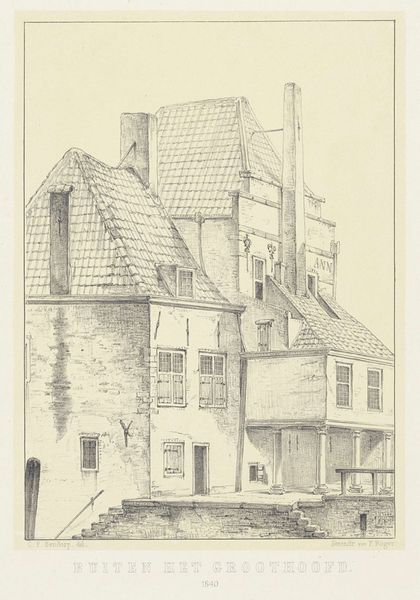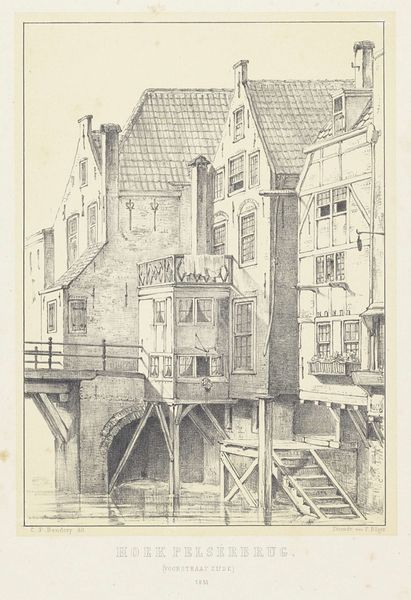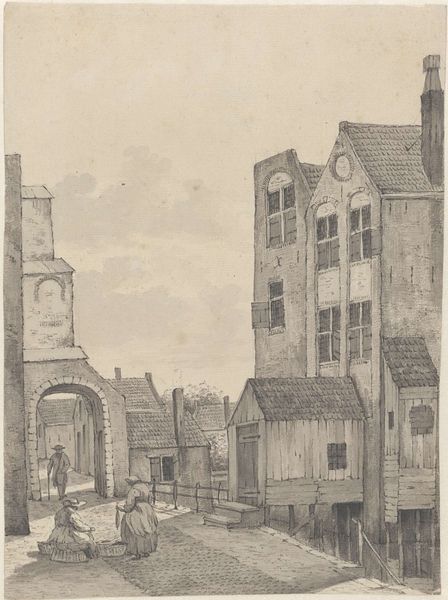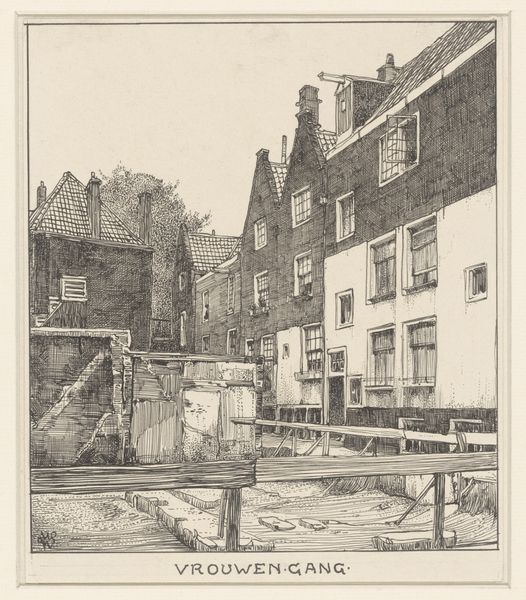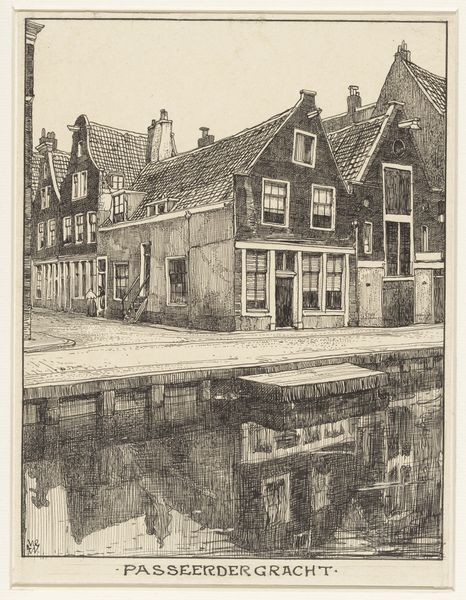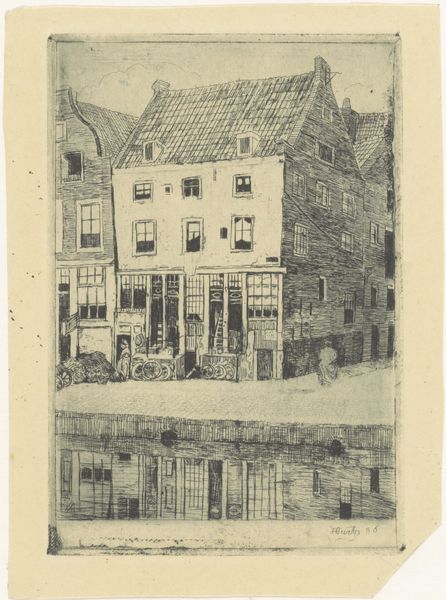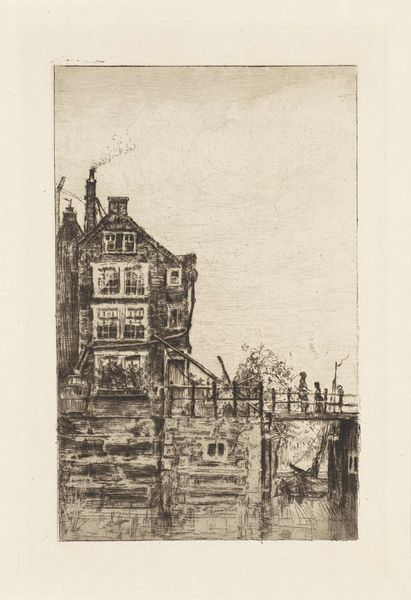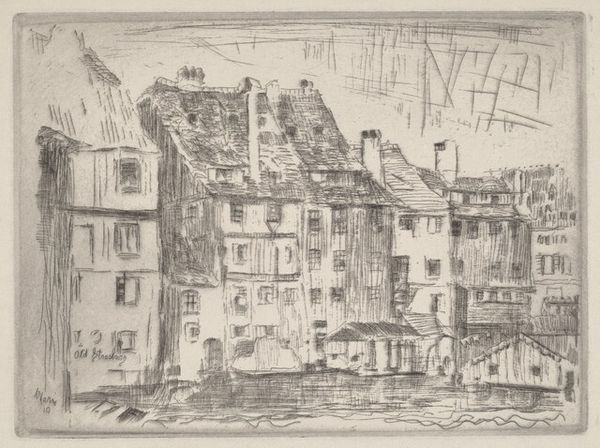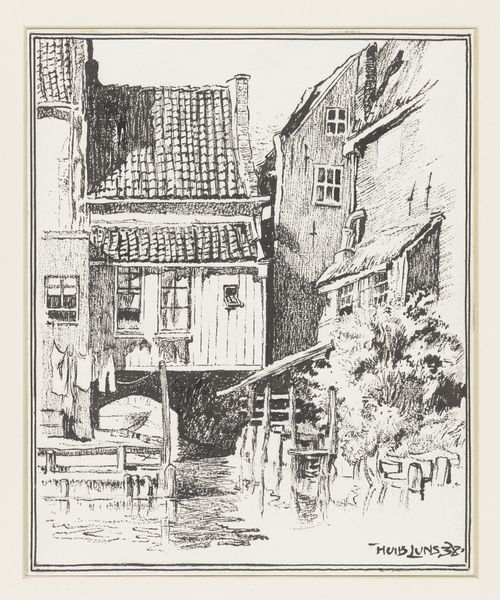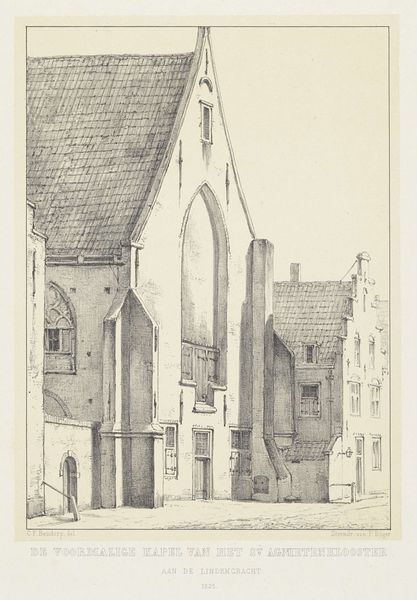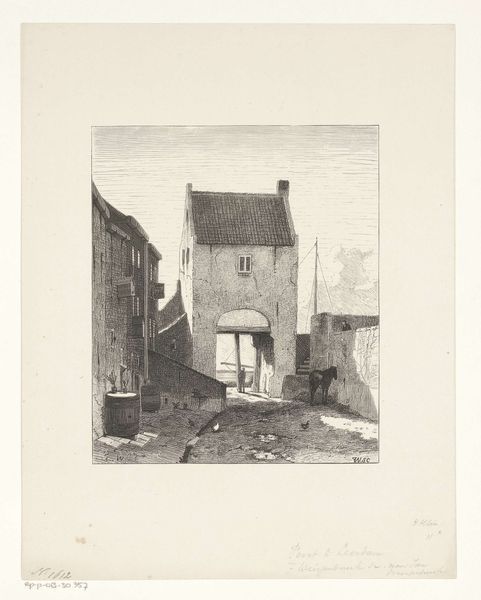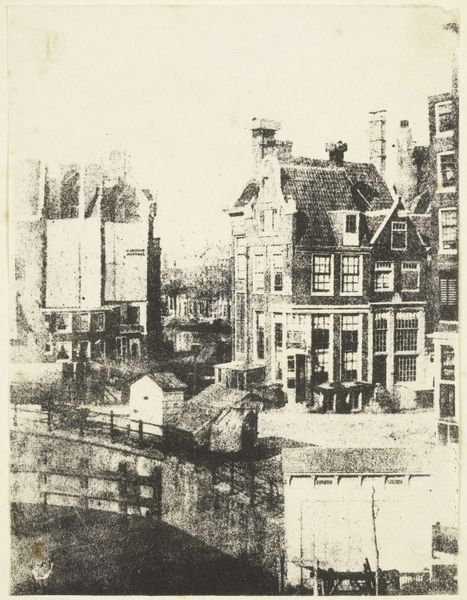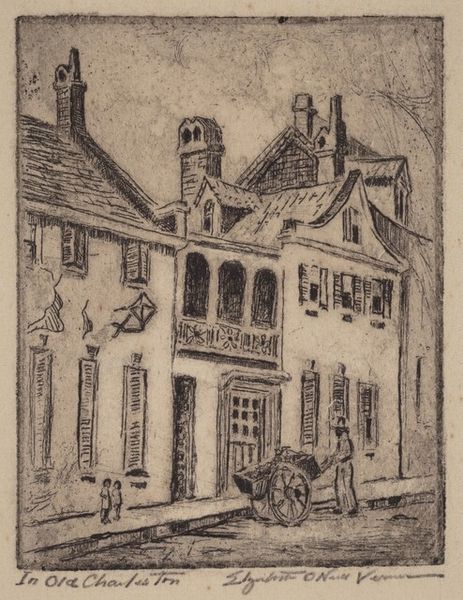
drawing, print, etching, ink
#
drawing
#
dutch-golden-age
# print
#
etching
#
landscape
#
etching
#
ink
#
cityscape
Dimensions: height 487 mm, width 324 mm
Copyright: Rijks Museum: Open Domain
Curator: Let’s turn our attention to "Watersteintoren in Dordrecht" by Carel Frederik (II) Bendorp, created around 1872. It’s an etching, showcasing a cityscape view in the Dutch Golden Age style. What strikes you first about it? Editor: The texture! The way the lines create a palpable sense of age on those buildings, like you could run your hand across the brick and feel the dampness of the canal air. And that soft grey ink really brings a sense of quiet industry and maybe slight decay, everything’s settled but there's labour indicated. Curator: Precisely. If we delve into the social context of Dutch Golden Age cityscapes, we find more than mere architectural documentation. These etchings often reflected civic pride and served as visual assertions of economic power in a rising merchant class. There’s also the romantic aspect, a looking back at this architectural type which could point to political commentary around preserving social structures of the time. Editor: That makes me think about how the materials contribute to that reading. Etching, being an indirect process, lends itself to that sense of remove. It's not about immediate expression, but about crafting an image through layers of intervention and careful manipulation, just as those burghers created and maintained their city. Curator: Exactly. Think about who would have had access to these prints. This wasn’t art for the masses, but for those within or aspiring to the ruling elite. The details in the facades speak volumes about the importance placed on visual displays of wealth and status, perpetuating class distinction through material consumption. Editor: The choice of the Watersteintoren is key as well. This tower would be a significant, monumental, element to daily life – literally shaping not only space but labour and trade along the canals of Dordrecht. By memorializing the architecture, Bendorp has subtly framed a social power relationship rooted in location. Curator: Furthermore, we must remember the legacy of Dutch colonialism during this period and understand this apparent idyllic cityscape may mask realities of oppression and exploitation in other places and within its own boundaries. Its visual beauty should be interrogated with that history in mind. Editor: A powerful reminder of how interwoven even seemingly pastoral scenes are with broader political economies. Considering the labor and resource extraction embedded in the production of materials, even etching paper becomes implicated. Curator: This piece encourages a thoughtful meditation on our relationships with spaces. Editor: Absolutely, and also reminds us of the weight materials have within their historic moment.
Comments
No comments
Be the first to comment and join the conversation on the ultimate creative platform.
